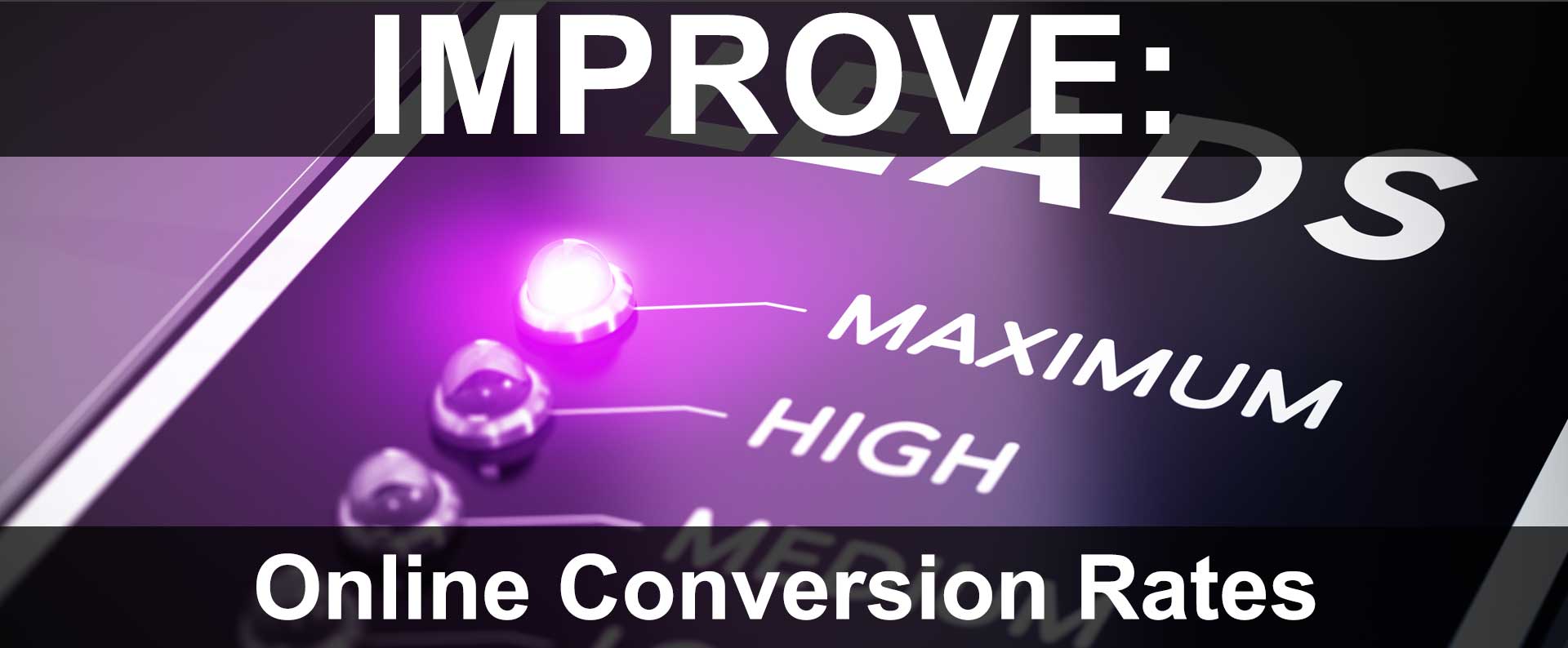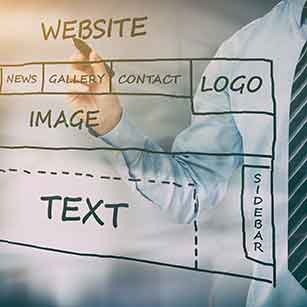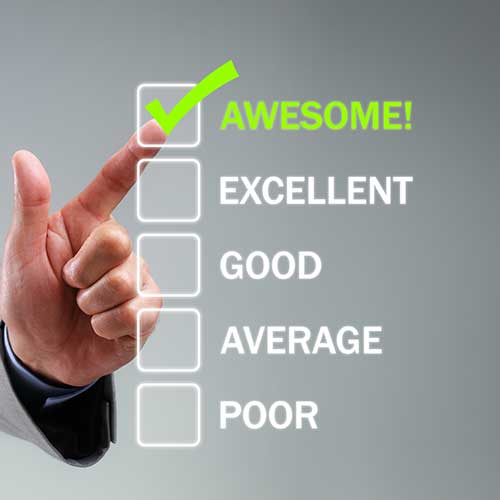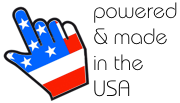One of the most effective strategies to maximize a company's online return on investment is by boosting the conversion rates of the existing traffic on the website.
Enhanced conversion leads to a rise in lead generation and more online sales WITHOUT the need for additional expenditure on extra traffic or advertising.
Understanding Conversion Rate
A website's Conversion Rate (CR) is the ratio of sales or leads generated from the existing number of visitors on the site.
Calculating Conversion Rates is straightforward:
- Identify the total number of orders or leads generated from the website/profile over a specific period (e.g., one month or one year)
- Using analytics, determine the total number of unique visitors for the same period
To calculate the Conversion Rate (CR), divide the total orders (or leads) by the total unique visitors and multiply the result by 100 to get the conversion percentage, also known as Conversion Rate.
Example Calculation
(TOTAL ORDERS / TOTAL UNIQUE VISITORS) * 100 = CONVERSION RATE
For instance, if a site had 10,000 unique visitors and 250 orders in November, you would divide 250 by 10,000, which equals 0.025, and multiply that by 100 to get a result of 2.5%.
(250 / 10,000) * 100 = 2.5%
This indicates that 2.5 unique visitors out of every 100 unique visitors convert to a sale or lead.
Increased Profit, No Extra Investment
Once a business has determined their Conversion Rate, what does it signify?
Here are some general guidelines for evaluating online Conversion Rates and their implications for the company:
- Over 5% Conversion: The business operates in a vertical market with little to no competition, or customers have limited alternative choices
- 3-4% Conversion: The website is performing exceptionally well with minimal room for improvement
- 2-3% Conversion: This is an average rate, indicating that the website is performing adequately with a few areas for improvement
- 1-2% Conversion: The site or profile needs significant improvement to convert traffic into orders or leads
- Under 1% Conversion: The website requires substantial improvement and should be analyzed thoroughly for potential enhancements
By enhancing the online conversion rate, a company can boost profits and generate more revenue!
Increasing Conversion Rate (CR) typically involves optimizing the existing website (or online presence) content to enhance the customer experience.
Areas for Improvement
Regardless of the Conversion Rate, there are always opportunities to enhance content and customer experience. There are numerous strategies to boost Conversion Rates.
Here are a few key areas to focus on that generally enhance any website's (or online presence) Conversion Rate (CR):
A/B Testing Scenarios
A/B Testing enables a webmaster or marketing team to determine which factor elicits a better response or Conversion Rate.
- By testing "A" against "B" scenario, one can identify which leads to improved response, user experience, and ultimately better conversion.
- The factors being tested can range from:
- overall website layouts,
- content selection,
- wording choice (wording choice A, versus wording B),
- graphical interface options,
- Calls To Action,
- or even product/service options.
- Literally, any aspect can be subjected to an A/B Testing scenario for Conversion Rate enhancement.
Calls To Action (CTA)
Another strategy to enhance conversion is to use clearly identifiable calls to action (CTA's). Sometimes visitors are interested and want to proceed, but are unsure of how to do so.
By clearly guiding the customer on where to click and proceed, a website can significantly enhance its overall conversion rate (CR):
- Ensure each page of the site clearly & identifiably has CTA's that prompt the user to act & move forward.
- Test different CTA's using A/B Testing to see which variations generate a higher conversion rate versus others.
Accuracy, Professionalism, & Security
Presenting a competent, professional, and secure organization is crucial to converting visitors into paying customers.
Ensuring the website contains accurate information with a professional appearance is a key factor in enhancing a website's conversion rate. Make sure all information on the website is accurate and up-to-date.
- The website should have a professional and clean design that is easy to navigate.
- A cluttered or confusing website can deter potential customers.
- This includes product descriptions, prices, contact information, and any other relevant details.
- A cluttered or confusing website can deter potential customers.
- Security is also a major concern for online shoppers.
- Make sure your website is secure and that this is clearly communicated to visitors.
- This can be done by displaying security badges, using secure payment gateways, and having a clear privacy policy.
Personalization
Personalization can significantly enhance the user experience and increase conversion rates. This can be done by:
- Use marketing automation for:
- tailoring the content,
- offers,
- and overall experience based on the user's:
- behavior,
- preferences,
- and past interactions.
- Use cookies or other tracking technologies to gather data about your visitors.
- This can include their:
- browsing history,
- past purchases,
- location,
- and more.
- This can include their:
- Use this data to personalize the content and offers displayed to each visitor.
- For example, you could show product recommendations based on their past purchases or browsing history.
- Personalized emails or notifications can also be effective in driving conversions.
- These could include:
- personalized product recommendations,
- special offers,
- or reminders about items left in their shopping cart.
- These could include:
Mobile Optimization
With more and more people using their mobile devices to shop online, it's crucial to ensure your website is mobile-friendly. A website that is not optimized for mobile can lead to a poor user experience and lower conversion rates.
- Make sure your website is responsive, meaning it automatically adjusts to fit the screen size of the device it's being viewed on.
- Ensure all elements of the website, including menus, buttons, and forms, are easy to use on a mobile device.
- Consider using mobile-specific features, such as click-to-call buttons or location-based offers.
Customer Care
Often, customers leave a website without purchasing because they're unsure of what will "happen next" and what kind of customer service they will receive should they need assistance.
A good, solid website presence will have a complete "Customer Care" section detailing all issues and questions a customer could possibly expect ranging from:
- Customer Service Contact Information
- Shipping & Handling Rates & Timelines
- Return & Exchange Policy
- Dispute Policy
- Terms & Conditions
- Other specific FAQ's relating to the industry or business
- Provide a Live Chat option during normal business hours for questions
- Provide full contact, phone, and email for all other questions
LEAVE NO QUESTION UNANSWERED!
A good website to review for a solid customer service and help section is Amazon. You'll note they cover about every issue one could possibly imagine in detail, so the customer is not left wondering "what next?"
Product/Service
When it comes to describing the company's products and services, remember to:
- Write the content from the point of view of the customer; focus on the benefits to the consumer.
- Discuss how the product/service will solve the customer's problem.
- Give full disclosure and describe all aspects and views.
- The more detailed information available to the consumer about the product/service, often results in a successful purchase with a happy customer.
- An informed customer often leads to a happy customer.
An additional benefit from having a wealth of information on every product and service page, is this information will help a site to become a recognized encyclopedic authority on a subject; thus helping to receive top ranking in search engines.
Help Section
A detailed Help and Tutorial section will:
- Let customers know that information is available for help once they've purchased their product and service; thus again building trust and making the customer feel comfortable in purchasing from the business.
- A help section can cover a full array of issues ranging from simple question and answer sections, to more complex and detailed tutorial sections on using the product or service.
Testimonials/References
Testimonials and References give:
- The customer peace of mind in knowing that a company has a history of doing as promised and following through.
- Often testimonials & references can be expanded upon by providing in-depth case studies on customers the company has assisted in the past; what obstacle(s) they faced, and how the product or service solved that issue for the customer.
Summing It Up
By focusing on these areas, businesses can significantly enhance their online conversion rates, leading to increased sales and revenue without the need for additional traffic or advertising. One of the most efficient and effective methods to improve the return on a company's online investment, is by improving the website's conversion rates of existing traffic.













